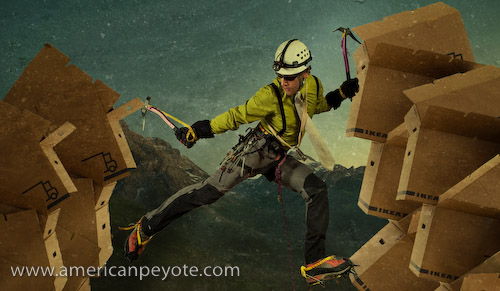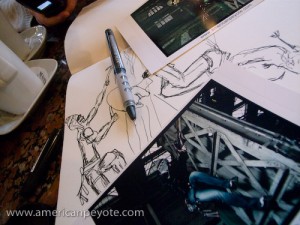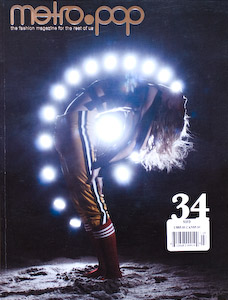The blood thirsty photo blog sphere was set ablaze in a napalm storm over a simple post, Four Reasons to Consider Working for Free by David Hobby, the publisher of Strobist. The article was one of those long and well-written posts, the type which people like to read because it’s not a regurgitation of all the other photo blogs on the net. In his post David talks about the benefits of working for free, of offering free photography services to people who he wants to photography, and who wouldn’t have a budget for his services otherwise. Of course, he doesn’t mean shooting for free for people who could pay or giving content away for unrestricted commercial usage. Depending on who you are you’ll see the two words, Photography and Free and Professional and either, become enraged, become inspired, remain unaffected. Nothing is free, a pitch is always given, a sale sometimes made, we’re all in an ever changing economic system. You just have to know which game you’re playing.
If the idea of free photography from a professional photographer enrages you, there’s probably some underlying feeling that such a statement encourages people to devalue their work, give away a product for free, and depresses the economic value of the entire photography market. Those who are inspired might feel this way because they believe that photography is about art and expression and taking pictures of what you want to photograph despite not earning a direct financial payment is what life is all about.
Both reactions might require a few assumptions on the part of the reader. First, one might suppose that a professional photographer giving away a service for free, in the hopes of future financial returns is no way to run a business. There is an alternate view. When you perform a certain function and receive money for it, and do at a higher level than most of your peers, it’s called a job, a profession, or maybe even a career. If you do something on the side, that you don’t get paid for or doesn’t produce a sizable income but you do it because you find it more interesting than TV, it’s call a…hobby.
So, you could start with the perception that David Hobby is a professional photographer who writes about giving away photography for free. But it’s also true that sometimes people work one job, and work on their hobby in the off hours, and eventually bring their hobby to such a high level, that it becomes their job, a profession, or maybe even a career. Is it an insult to call a professional blogger a measly photographer? Should a newspaper-photographer-turned-blogger use a Web 2.0 business strategy to incubate their photography hobby and turn it into a startup business? If a professional blogger gives away free photography, does it help his/her blogging business model or does it bring their dreams of being a professional photographer closer to reality? What does it mean for a blogger to have to have a career in a Web 2.0, soon to be Web 3.0 world? How does a photographer market themselves in the blogsphere?
If a professional photographer simply gives away photos the case could be made that they’re devaluing the overall creative market of the world. But if a blogger who is also a photographer on the side publishes a post called…Four Reasons to Consider Working for Free, the purpose of the post isn’t necessarily about selling photos and finding future clients, or is it?
The web is a constant production-consumption, an economic system. Surpluses and shortages and the smart management of resources. Veil readers thirsty for blood soaked words to sink their teeth into are constantly hungry for a new topic to debate on blogs and webpages. There are a few ways to have a popular blog, give people what the want to read, develop an emotional connection to your readers, and/or create controversy for discussion.
The David Hobby Free Photography Business Plan could simply be a logical application of Wikinomics to a photo blogging business model and echoes the ethos set down by John Grant in his book “After Image mind altering marketing.” The best way to market to a smart set of consumers is to teach them something.
In the web industry, producers produce and consumers consume. David Hobby writes about working for free in the hopes that this will bring a return for a future photo business, but Strobist.com reaps the benefits of web traffic and reactions in the present day. Of course, this improves the blog business (and related Strobist workshop spinoff), where any exposure is good exposure. Any reaction positively impacts the Google hits and more links mean more visitors equals more ad revenue (hopefully). It’s just the application of the Wikinomics model to photography. Remove the money from the equation, and the artist should be free to create as they like. Art and design is nothing more than reinterpretations of past ideas. And the David Hobby Free Photography Business Plan is what use to be called doing personal projects. You shoot what you want and organize the projects you want to organize because they interest you.
Some say that nothing which is free has any real value. And something which is useless can never be truly beautiful. Does giving PopPhoto permission to publish my Flickr photo devalue the cumulative impact of the creative industries? Is David Hobby working for free so he can blog about it and cause discussion on the Strobist blog and bring more hits to his page? This is what I did when I reviewed the Joey L Photoshop Tutorial DVD. I bought it to learn photoshop and as a bonus, reviewed it to bring exposure to my blog, to see if I could create – a reaction. I created content for web consumers who were, and still are hungry for info on the Joey L Look. Viewers find my Joey L post and consume that content. I just don’t have anything to sell them. That’s the big web-based circle of life and content distribution. Is giving away free knowledge on my blog providing a suitable career path on my way to being a movie director in Hollywood?
Perhaps, and then I’ll hire David Hobby to photography me.
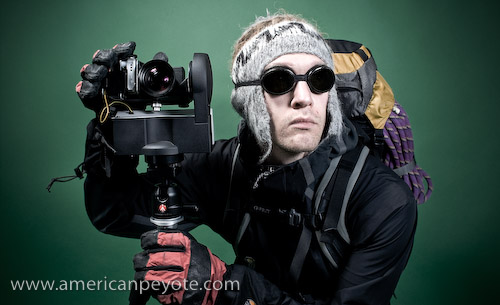


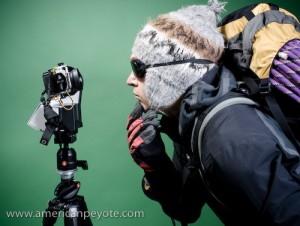 Ease of Use
Ease of Use A key to creating good stitched panoramas is accurately centering the camera on your panoramic mount and figuring out things like the nodal point of the lens and other important details I don’t care about. I deal with technical details in my research work, I avoid them with my photography. In this respect the GigaPan rocks, because it has a marker for exactly where the lens should be in relation to the camera mount, so all you have to do is attach your camera with a screw and center it on the mount. I’m under the impression that given the small physical size of a compact camera lens, the exact location of the nodal point of the lens in relation to the rotating base isn’t as critical as with a DSLR. There’s a bubble level on the GigaPan which makes leveling the camera quick and painless, which is also important for creating images which are aligned well and makes the stitching process easier. My Ricoh GRD with the GT-1 40mm lens just barely fits on the GigaPan, but this is because the 40mm add-on lens is wider and physically larger than the GigaPan was designed for. For the automation process, a robotic arm depresses the shutter release on the camera to take a picture, and then moves to a new position and takes another image, and so on till the pano is finished. The camera has to be pre-focused (generally focused to infinity) and the exposure needs to be locked so the images can be accurately stitched together without exposure mismatches between images. In this regard the Ricoh GRD, GX100 and GX200 cameras are perfect, because all those operations are extremely easy to do on those camera models.
A key to creating good stitched panoramas is accurately centering the camera on your panoramic mount and figuring out things like the nodal point of the lens and other important details I don’t care about. I deal with technical details in my research work, I avoid them with my photography. In this respect the GigaPan rocks, because it has a marker for exactly where the lens should be in relation to the camera mount, so all you have to do is attach your camera with a screw and center it on the mount. I’m under the impression that given the small physical size of a compact camera lens, the exact location of the nodal point of the lens in relation to the rotating base isn’t as critical as with a DSLR. There’s a bubble level on the GigaPan which makes leveling the camera quick and painless, which is also important for creating images which are aligned well and makes the stitching process easier. My Ricoh GRD with the GT-1 40mm lens just barely fits on the GigaPan, but this is because the 40mm add-on lens is wider and physically larger than the GigaPan was designed for. For the automation process, a robotic arm depresses the shutter release on the camera to take a picture, and then moves to a new position and takes another image, and so on till the pano is finished. The camera has to be pre-focused (generally focused to infinity) and the exposure needs to be locked so the images can be accurately stitched together without exposure mismatches between images. In this regard the Ricoh GRD, GX100 and GX200 cameras are perfect, because all those operations are extremely easy to do on those camera models. Design
Design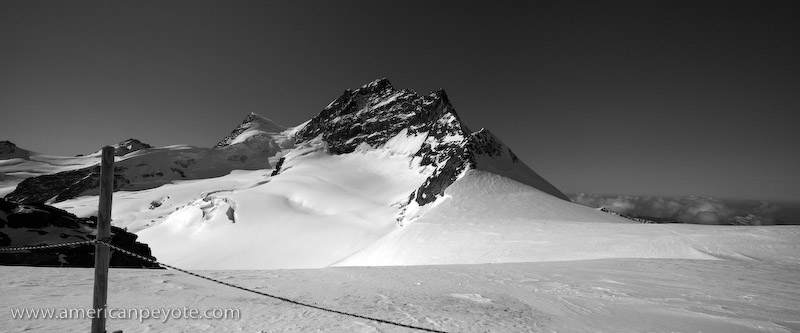
 Brass-Tacs
Brass-Tacs